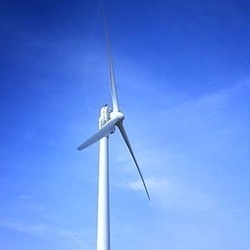 Nearly five years after issuing its draft directives, the U.S. Forest Service has issued final directives for wind energy special-use authorizations, Stoel Rives LP reports. The new directives supplement existing Forest Service guidance on wildlife and special uses, but specifically address issues associated with the permitting and siting of wind energy facilities.Â
Nearly five years after issuing its draft directives, the U.S. Forest Service has issued final directives for wind energy special-use authorizations, Stoel Rives LP reports. The new directives supplement existing Forest Service guidance on wildlife and special uses, but specifically address issues associated with the permitting and siting of wind energy facilities.Â
Key components of the directives can be found in a new chapter ‘Wind Energy Uses’ in the Special Uses Handbook, as well as in a new chapter titled ‘Monitoring at Wind Sites’ in the Wildlife Monitoring Handbook. The directives also include corresponding revisions to existing agency guidance on energy generation and special uses.
Although the Forest Service directives generally parallel the U.S. Bureau of Land Management (BLM) Instruction Memoranda on wind energy development, there are key differences, including significantly greater potential for competitive bidding and substantially more explicit wildlife-monitoring requirements, according to Stoel Rives.
Like the BLM, the Forest Service offers three types of authorizations for wind energy uses. There are two types of site testing and feasibility permits, which are issued for the installation, operation and removal of meteorological towers or other instruments to gather wind data: (1) minimum area permits that authorize land use for the minimum area necessary for the construction, operation and removal of site testing facilities (not to exceed five acres) and (2) project area permits, which are issued for more than five acres and exclude uses of the authorized area by other project proponents. The third type of permit is for the construction, operation and removal of wind energy facilities.
Unlike the BLM, however, the Forest Service is required to evaluate whether a competitive interest exists when considering an application for a project area permit. This evaluation is based, in part, on response to notice published in local newspapers.
Site testing and feasibility permits may be issued for up to five years. However, equipment must be installed and operational within two years after issuance, and test results must be reported within three years after issuance, according to Stoel Rives.
Other key provisions of the draft guidance include the following:
– The directives require the Forest Service to consider impacts to ‘species of management concern,’ which are defined broadly to include, in addition to listed and candidate species, species of high public interest and state-protected species.
– The directives also require the Forest Service, ‘if possible and practical,’ to restrict noise to 10 decibels above the background noise level at nearby residences and campsites; in or near habitat of wildlife known to be sensitive to noise during reproduction, roosting or hibernation; or where habitat abandonment may be an issue.
– The directives retain the categorical exclusion for minor special uses, including met towers, using less than five contiguous acres of land.



